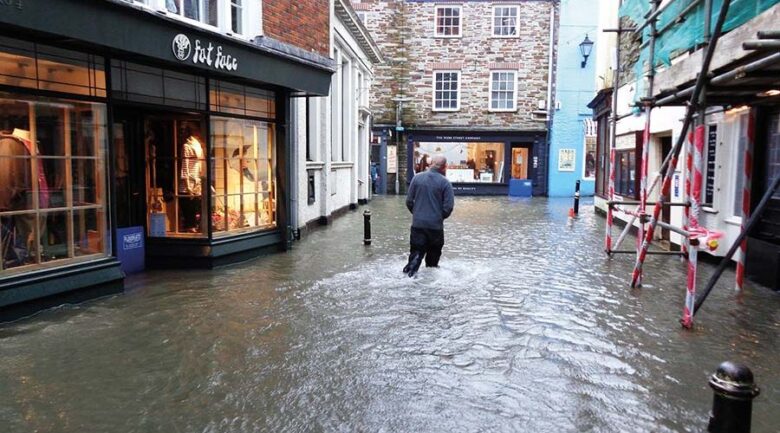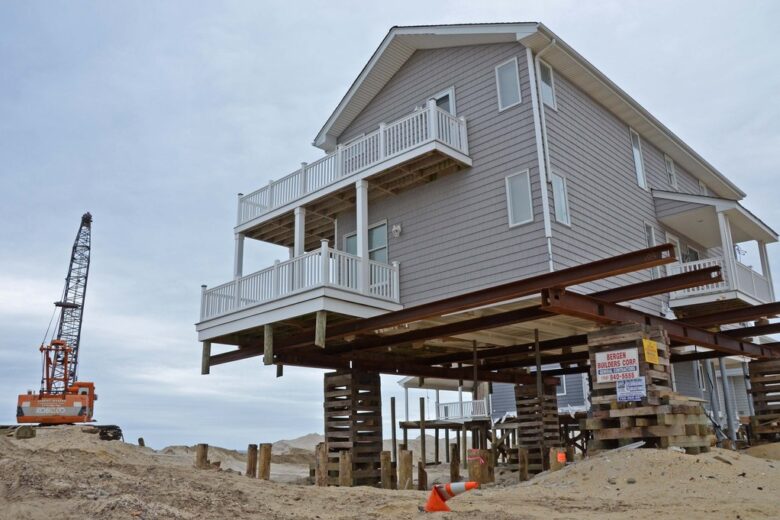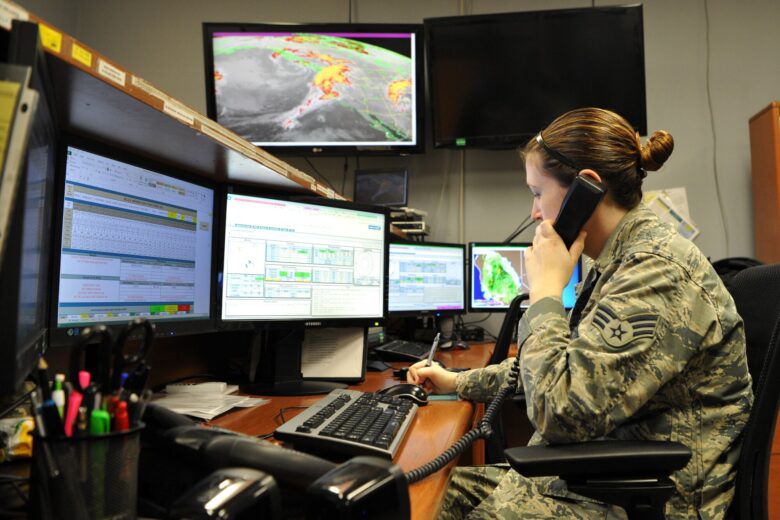Owning a home in a flood-prone area can be both a blessing and a challenge. While the picturesque views and proximity to water may be enticing, it’s important to be well-informed and prepared for the potential risks associated with flooding. In this blog, we’ll explore five essential things you need to know to safeguard your home and your peace of mind in such an environment.
Contents
- 1. Understand Your Flood Risk
- 2. The Importance of Flood Insurance
- 3. Mitigate Flood Risks Through Elevation and Building Techniques
- 4. Prepare a Flood Emergency Kit and Evacuation Plan
- 5. Regular Maintenance and Home Assessments
- 6. Engage with Your Community and Local Authorities
- 7. Stay Informed and Monitor Weather Conditions
1. Understand Your Flood Risk

Source: psbjmagazine.com
Before diving into the specifics of flood protection, it’s essential to understand your flood risk. Flood zones are designated areas based on the likelihood of flooding, often determined by historical data and topography. The Federal Emergency Management Agency (FEMA) provides flood maps that can help you identify your property’s flood risk. These maps categorize areas into different flood zones, with Zone A being the highest risk and Zone X being the lowest.
Knowing your flood zone can help you assess your vulnerability to flooding and make informed decisions about insurance and flood mitigation measures. Keep in mind that flood risks can change over time due to various factors like climate change, urban development, or changes in local infrastructure, so it’s essential to stay updated on your area’s flood risk.
2. The Importance of Flood Insurance
When it comes to protecting your home from flood damage, one of the most critical aspects to consider is flood insurance. You may be wondering, does HO-3 policy cover flood damage? Unfortunately, the answer is typically no. Many homeowners mistakenly believe that their standard homeowners’ insurance, typically an HO-3 policy, covers flood-related damage. However, this is a common misconception.
HO-3 policies typically provide coverage for various perils, such as fire, theft, and wind damage, but they explicitly exclude flood damage. To protect your home from flooding, you’ll need to purchase a separate flood insurance policy, typically offered through the National Flood Insurance Program (NFIP) or private insurers.
Flood insurance can be a lifesaver in flood-prone areas, as it covers not only the structure of your home but also your personal belongings. Without this coverage, you could face substantial financial losses in the event of a flood. Be sure to evaluate your risk, and if you’re in a high-risk flood area, obtaining flood insurance is a wise investment.
3. Mitigate Flood Risks Through Elevation and Building Techniques

Source: floodlist.com
While insurance provides financial protection, it’s equally essential to take proactive steps to mitigate flood risks. Depending on your property’s location and flood zone, elevation and specific building techniques can significantly reduce your vulnerability to flooding.
If you’re building a new home or making significant renovations, consider elevating your structure above the base flood elevation (BFE). This can significantly reduce the risk of flood damage. You may also want to consider elevating utilities, like electrical systems and HVAC units, above the BFE to prevent costly damage during a flood event.
Use flood-resistant building materials when constructing or renovating your home. These materials are less susceptible to water damage and can help reduce the extent of destruction in the event of a flood. Install flood vents in your foundation walls to allow water to flow freely in and out during a flood, reducing the pressure on your home’s structure. It’s important to consult with a qualified architect or engineer who specializes in flood-resistant construction so you can make your home more resistant to flood damage.
4. Prepare a Flood Emergency Kit and Evacuation Plan
When you live in a flood-prone area, it’s not a matter of “if” but “when” a flood might occur. Therefore, it’s crucial to have a well-thought-out emergency kit and evacuation plan in place. Create an emergency kit that includes essentials like non-perishable food, water, first-aid supplies, flashlights, batteries, a portable power station such as those from PreparedBee.com, a weather radio, and important documents. Keep this kit easily accessible and ensure that your family knows where it is.
Develop a comprehensive evacuation plan that outlines escape routes, rendezvous points, and emergency contacts. Practice this plan with your family to ensure everyone knows what to do in case of a flood. Remember, during a flood, it’s safer to evacuate early rather than waiting until conditions worsen. Having these preparations in place can make a significant difference in your family’s safety and well-being during a flood emergency.
5. Regular Maintenance and Home Assessments

Source: homegauge.com
Routine maintenance can make a world of difference in flood-prone areas. Start by ensuring that your home’s gutters and downspouts are clean and directing water away from the foundation. A clogged gutter can lead to water pooling around your home, exacerbating flood risks. Regularly inspect your property for signs of erosion or settling that could make your home more vulnerable to flooding. Address any issues immediately.
Consider installing a sump pump if your home has a basement or is at a lower elevation. A working sump pump can help remove water that collects in your home during a flood. Regularly test and maintain it to ensure it’s ready for action when you need it most. Also, be proactive about checking for cracks in your foundation or walls. Sealing these cracks can prevent water intrusion during minor flooding events. Taking the time for regular maintenance and assessments can reduce your flood risks and save you from costly repairs in the long run.
6. Engage with Your Community and Local Authorities
Living in a flood-prone area often means that your neighbors are facing similar challenges. Engaging with your local community can provide mutual support and shared resources. Attend local town or city meetings that discuss flood management strategies and infrastructure updates. Being informed about community-wide efforts can help you tailor your home protection strategies more effectively.
Local authorities often provide resources and programs for residents in flood-prone areas. These might include sandbag distributions, financial assistance for home elevations, or community workshops on flood preparedness. Building a strong relationship with local authorities can ensure you’re first in line to receive help and resources when they become available. Furthermore, staying connected with your community fosters a sense of camaraderie, ensuring that when floods do occur, neighbors look out for one another, creating a safer environment for everyone involved.
7. Stay Informed and Monitor Weather Conditions

Source: beale.af.mil
Lastly, staying informed about weather conditions and flood alerts is vital for homeowners in flood-prone areas. Modern technology provides various tools to help you keep track of potential flood risks. Invest in a NOAA weather radio, which provides real-time weather alerts and flood warnings specific to your location. These radios are a reliable source of information during emergencies. Download weather apps and subscribe to alerts from local authorities and emergency services. These apps can provide timely updates on changing weather patterns and flood warnings.
